Mad Hedge Technology Letter
September 14, 2022
Fiat Lux
Featured Trade:
(JOB MARKET WORKING AGAINST TECH STOCKS)
(TWLO), (META), (NFLX)

Mad Hedge Technology Letter
September 14, 2022
Fiat Lux
Featured Trade:
(JOB MARKET WORKING AGAINST TECH STOCKS)
(TWLO), (META), (NFLX)

As the tech job cuts go from bad to terrible, how does this shake out the tech sector?
Just this morning, Twilio (TWLO) announced a major purge sacking 11% of its workforce to focus on reducing operating costs and improving margins.
Is this the end of it for the mighty tech machine?
Hardly so.
Tech companies will get more lean, efficient, and cutthroat which many might argue they should have been like that in the first place.
It’s somewhat true that tech business models got somewhat bloated in the era of euphoria.
Some unnamed big tech companies almost became like adult daycare centers.
Like overshooting in terms of revenue, development, and achievements to the upside in tech, and I acknowledge there was a lot to celebrate, I believe that the same works in reverse.
Staff at tech companies will be disposed of ruthlessly, and tech companies will most likely overcut jobs as a way to get their points across and show shareholders that they will flesh out costs during tough times.
Tough times in the big tech world mean less than growth margins, but they are still doing better than any small business who are outright going bankrupt.
Tech companies are in an advantageous position because the technology they harness can be used to scale up using software.
Less staff that manufactures higher productivity is an executive’s dream.
This time around, I firmly believe that automation will start to reach further up the employment chain because automation gets better with each iteration.
Humans also complain, get sick, need bathroom and coffee breaks, ask for promotions and raises when software code doesn’t.
We aren’t to the point of one CEO and the rest bots and software, but that’s the direction we are headed.
The silver lining for many of these fired tech workers is that the labor market is on fire. Although the unemployment rate ticked up to 3.7% last month, it’s still hovering at a 50-year low. The data is there – there are about two job openings for every unemployed person.
More than 50,000 tech workers have been laid off since the beginning of this year.
These fired tech workers will be able to find new jobs rapidly and in many cases with a juicy promotion, higher wage, and better benefits like 100% remote work opportunities, because there is still a huge shortage of qualified workers. Skills are fungible too.
Many will be able to pivot into the financial world and find jobs on Wall Street, who for the past generation have been losing talent to tech.
As interest rates rise, banks become winners.
Lastly, the pedestrian interest rate rises executed by the US Central Bank means that the job market will stay a lot hotter than first expected.
Even if they do get to 4% in the Fed Funds rate by the end of 2023, 4% is still historically low and companies will still be hiring albeit with a more measured approach and lower wages.
The slow pace of rises hurt tech because it allows the fired workers more time and better opportunities to get entrenched in a new sector while job offers are still plentiful.
The net result is the opposite of what the Fed wants which is more inflation as fired tech workers rotate into better-paying jobs spending even more money on goods and services.
This feeds into the higher inflation problem.
In short, this is a death-by-a-hundred-cuts sort of reaction for tech stocks. Tech stocks won’t explode to the upside until the workers can’t just re-up to a cushy healthcare job or Wall Street job like now.
Short every rally in wounded tech stocks like Facebook (META) and Netflix (NFLX).
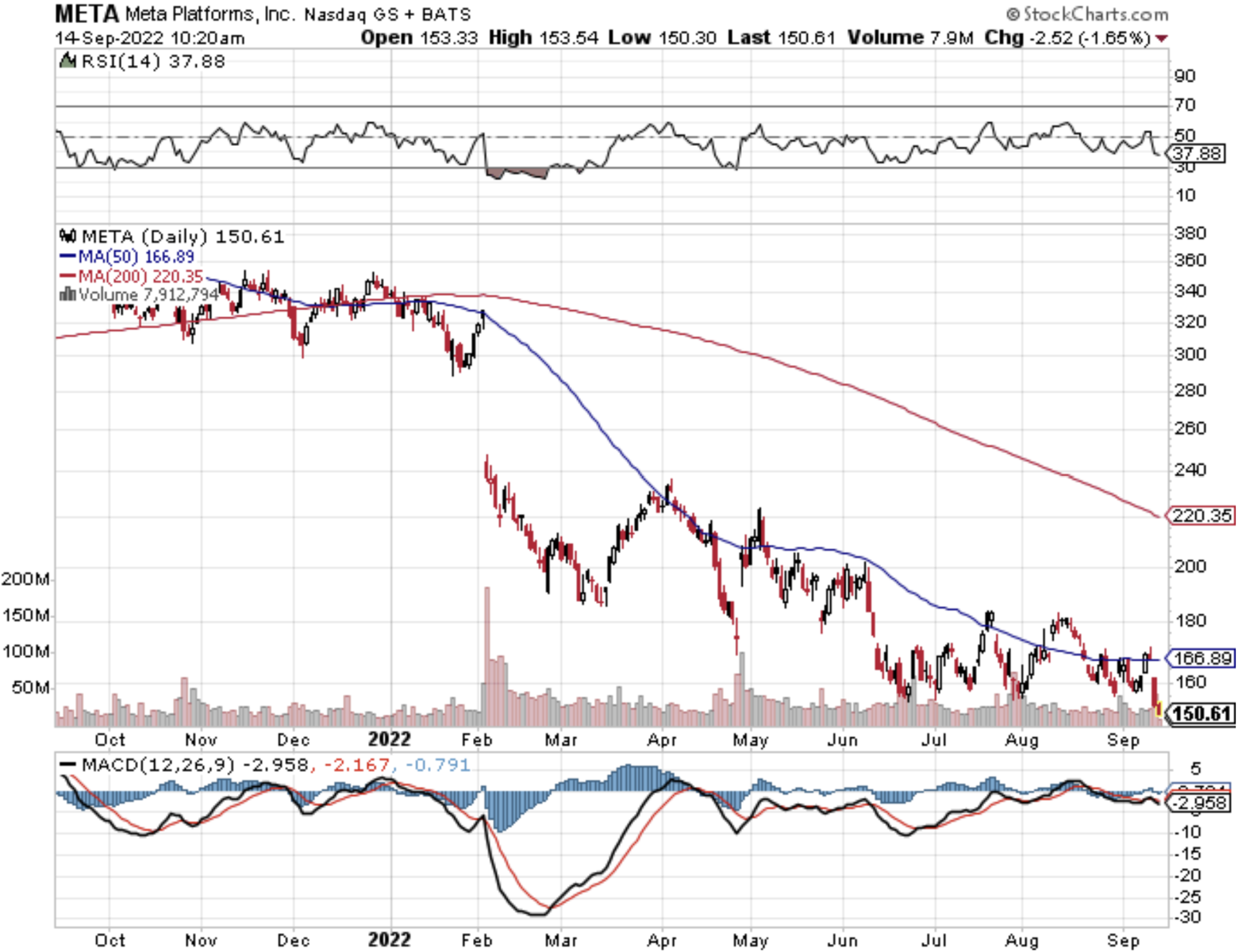
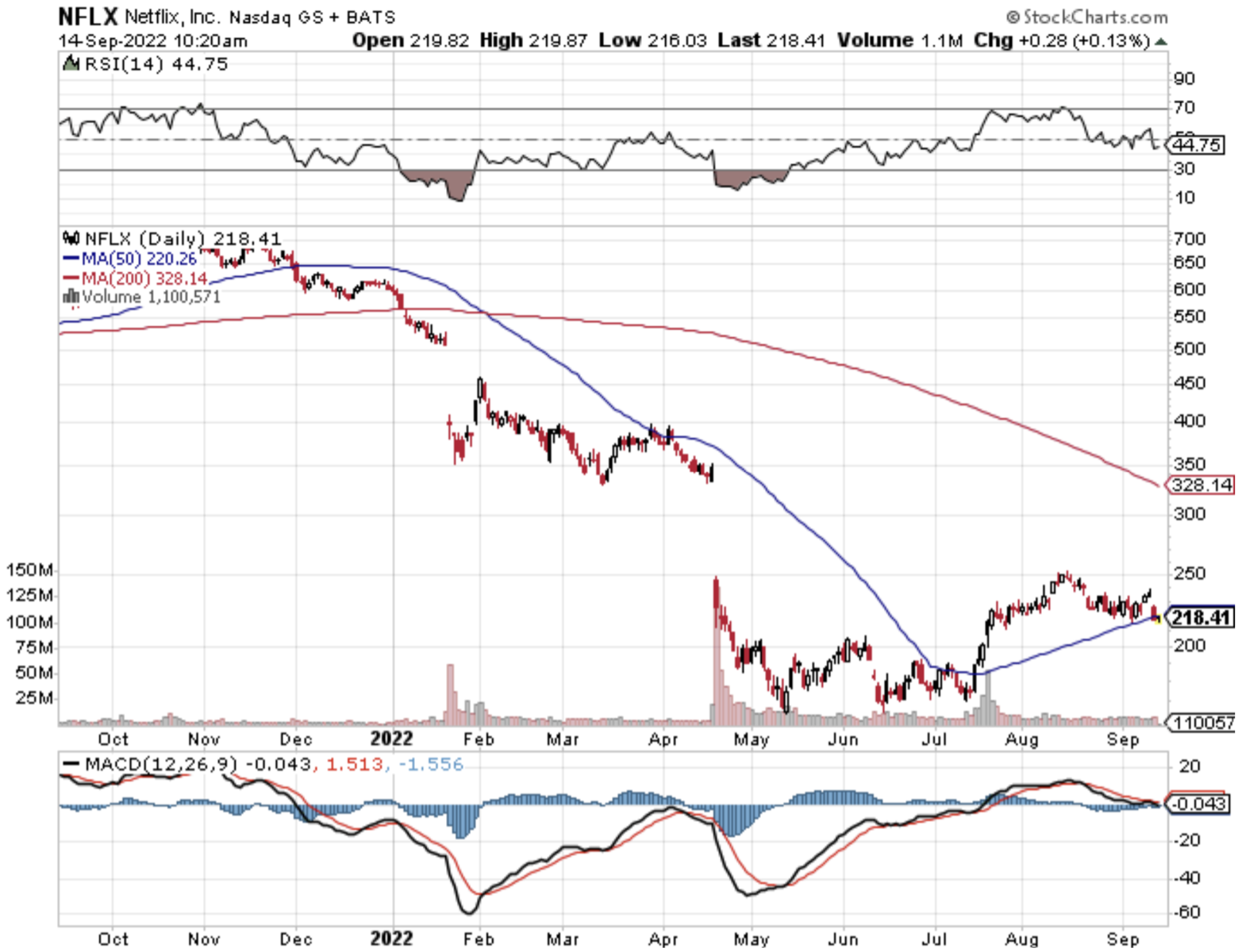
Mad Hedge Technology Letter
February 11, 2022
Fiat Lux
Featured Trade:
(THE GROWING CLOUT OF TWILIO)
(TWLO), (ADBE), (CRM), (GOOGL), (AAPL)

Twilio (TWLO) cranked the ball out of the ballpark in its latest quarterly performance.
For a company that’s been burning cash for years, such as 2021’s performance of negative $950 million, analysts expected another few years of losses.
That’s not the only loss, the years before were saddled with unprofitable times like the $490 million burnt in 2020 and they still haven’t recorded a single profitable year yet.
So for Chief Executive Officer of Twilio Jeff Lawson to tell us that he expects Twilio to be profitable in 2023 is a gamechanger.
This guy has elevated Twilio to the dominant provider of business-to-consumer communications tools, powering messages such as the Uber notification you receive after ordering a ride, into an estimated $79 billion market for software to help optimize customer experiences.
Busting out the “P word” when many analysts were expecting to count the losses is a big deal for growth tech and TWLO can expect a new breed of institutional investors to enter the fold because of their positive signaling.
It’s not only them.
They have been tactical in a series of aggressive moves adding new companies to their core like Segment.
Segment, the customer data platform provider that Twilio purchased in 2020 for $3.2 billion is one of the reasons why the juice might be worth the squeeze.
It was the company’s biggest acquisition to date and the most-watched by investors.
The integration of Segment is expected to enhance the bulk of Twilio’s product portfolio.
It effectively functions as a repository of continually updated first-party customer information that businesses can use to improve marketing and support, with the goal of fostering loyalty and higher sales.
The timing of the deal was critical given Apple’s (AAPL) stricter data treatment and Google’s (GOOGL) narrowing of its web-tracking software.
At the same time, the acquisition of Segment nudged Twilio towards the direction of competing with Silicon Valley stalwarts like Salesforce (CRM) and Adobe (ADBE).
A key difference between Twilio and its rivals is the ability for developers within businesses to conveniently build customized programs on top of the company’s base tools.
Not only did management indicate that profitability is arriving next year, but they signaled strong revenue growth of over 30% for the next three years.
Easily said, TWLO is morphing into an indestructible force that is harnessing soon-to-be profitability, growth, and future success all wrapped into one company.
In this era, it’s hard to get all broad strategies working simultaneously because most tech firms will sacrifice profits for growth.
On top of that, management shared that they fully expect gross margins to surpass 60% in the long-term translating into a highly profitable company.
That’s the beauty of the software as a service (SaaS) model, the scalability works well inside the financial parameters which is why companies like Adobe and Salesforce bust out such great metrics.
Three other acquisitions Lawson believes will make a difference are Engage for the marketer, which is still very early in its cycle, most recently, a software called Frontline, which can be used by frontline workers and even sales teams to be more efficient, and lastly, Flex for the contact center.
All indications show this is nowhere near a “pandemic stock” and the fourth-quarter revenue jumping to 54% to $842.7 million while guiding for $865 million next quarter validates that.
This communication as a software company is sticky as can be and has a valid use case in many different apps that need to link the back-end interfaces with customer functionality.
TWLO will move from strength to strength going forward and this software company has a real chance to make its mark as not just a company considered second tier, but even a flight to safety type of tech stock which are few and far between.
The stock is still highly volatile which makes it easy to add on the big dips, but readers should avoid the small dips.
I am bullish TWLO.
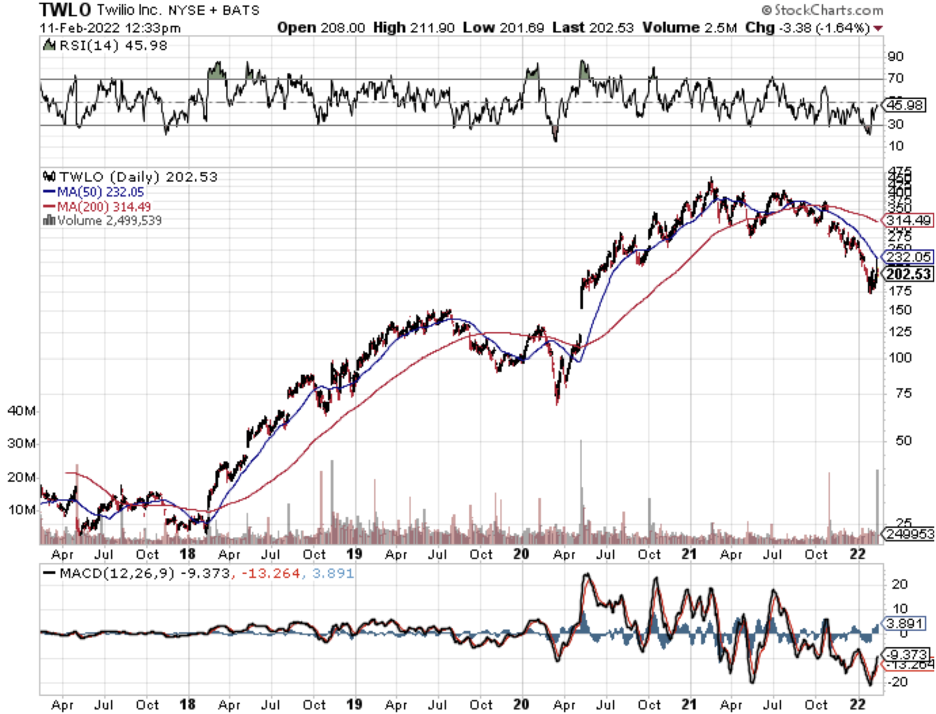
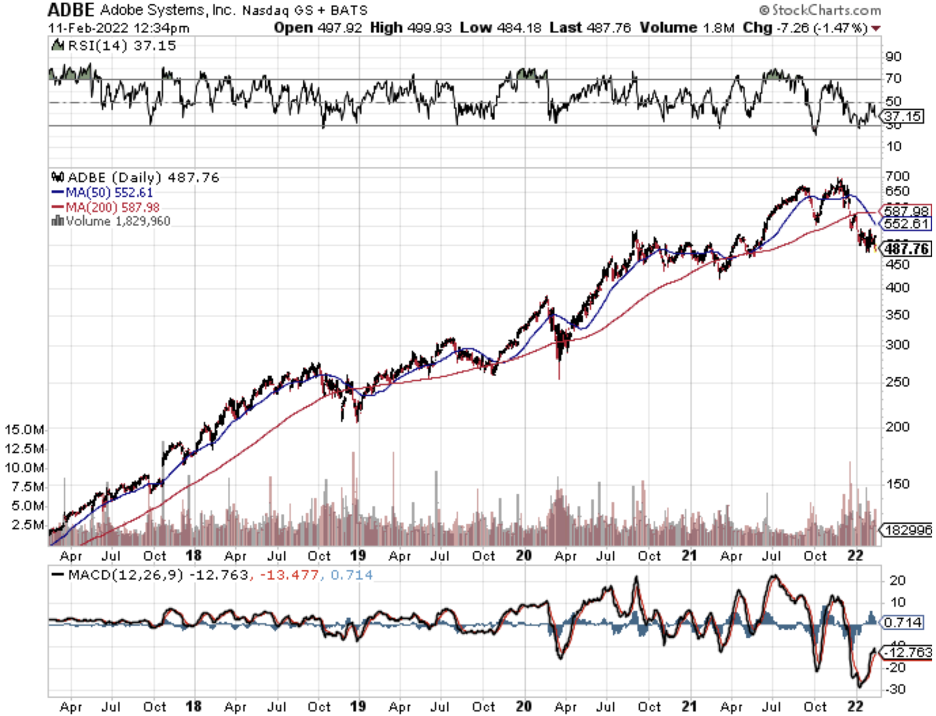
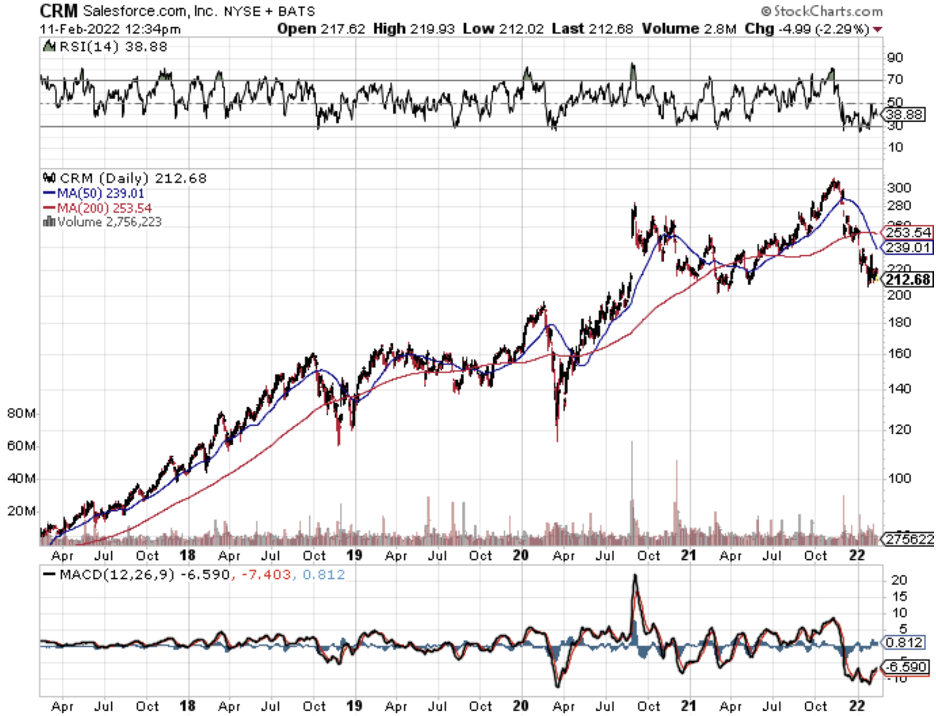
Mad Hedge Technology Letter
December 6, 2021
Fiat Lux
Featured Trade:
(THE HAWKS ARE HERE)
(ROKU), (ZM), (TWLO), (SNAP), (SQ), (MSFT), (CRM), (ADBE)

Higher inflation is something this tech bull cycle hasn’t dealt with, and it’s starting to rear its ugly head in the form of volatility and spades of it.
The Fed will have to increase interest rates or face runaway inflation that will crash the economy, but increasing interest rates will also make lives harder for tech companies.
As we try to understand the pace of interest hikes, certain tech companies will fare much better in this inflationary environment than others. To deduce the winners from the losers, investors should understand exactly how inflation affects each particular tech company.
Talk has gone from the Fed moving early to raise short-term rates, to the Fed moving even in early spring which in turn is spooking risk markets from cryptocurrencies, the S&P, and the Nasdaq.
Fed Chair Jerome Fed has done a poor job communicating his sudden hawkish tone and the market has had to quickly reprice risk assets because of the surprising nature of the hawkishness.
In the short-term, tech stocks will need some time to digest this new expectation, which I see as quite healthy, but short-term tough to swallow.
Fed Cleveland President Loretta Mester told the media she is “very open” to scaling back the Fed’s asset purchases at a faster pace so it can raise interest rates a couple of times next year if needed so this isn’t just one guy in Powell trying to move the needle.
Clearly, the Fed is moving in unison, and they threaten to become a major force in moving markets which is all we care about.
All that pressure is causing component and labor costs to rise. Companies that don't have enough pricing power to pass those costs on to their customers will likely see their gross and operating margins shrink.
This matters because tech companies offer some of the most generous salaries in the U.S. and substantial increases in pay hurts them the most.
Higher interest rates attract more consumers and businesses to put more money in higher-yield bonds and savings accounts.
There are 3 ways that higher rates are actually a gut punch to tech growth companies.
First, they increase the costs of borrowing incremental capital to expand a business. In more cases than not, tech growth companies rely on borrowed money because their operation is not yet sustainably profitable. That's bad news for high-growth tech companies, which are burning cash with widening losses.
Second, it reduces the long-term estimates for a company's earnings and free cash flow (FCF) growth meaning their underlying stock price is rerated downwards in the anticipation of this new reality.
Loss accruing tech companies commonly suffer an exodus as their underlying shares are repriced to reflect higher costs.
Just this morning we saw Roku (ROKU), Zoom Video Communications (ZM), Snap (SNAP), Twilio (TWLO), Square (SQ) breach 52-week lows.
The breadth of the market has been hollowed and the goalposts have indeed narrowed because of the hawkish tone at the Fed.
Lastly, higher interest rates drive institutional money into fixed income.
They do this largely by taking profits from crypto, tech stocks, or moving their stash on the sidelines then resurfacing the money into “safer” assets that anticipate weakening bond yields at the longer end of the curve.
So I won’t sit here and say sell all and every tech stock, it’s more nuanced than that.
I executed one position in December and that was Microsoft (MSFT) and it got pulled down with the broader market.
More importantly, I didn’t bet the ranch.
Ultimately, we still bask in the ideology that the tech bull market isn’t over yet because it isn’t, but this aggressiveness out of the blue has forced the overall tech market to temporarily rest with growth tech suffering major drawdowns.
In doing that, the ceiling for a Santa Claus rally is somewhat capped to the upside.
The Fed could have waited until January.
Sure, there will still be winners in tech and the odds of these winners are driven firmly behind the biggest and best like Microsoft, Amazon, Google, and Apple.
These are the type of companies that have the pricing power to raise prices and get away with it because consumers will be willing to pay it.
Other potential winners include cloud service giants like Salesforce (CRM) and Adobe (ADBE). These again are top-quality software stocks that can pass up higher enterprise software costs to the firms that can pay for it.
It’s entirely possible that the Fed could end up walking back some of these aggressive stances in the interest-raising process next year.
Don’t fight the Fed and don’t expect tech growth stocks to reverse until we receive more clarity with interest rate policy, if a reverse is triggered, it will play out with Apple, Amazon, Google, and Facebook, and Microsoft leading the way higher.
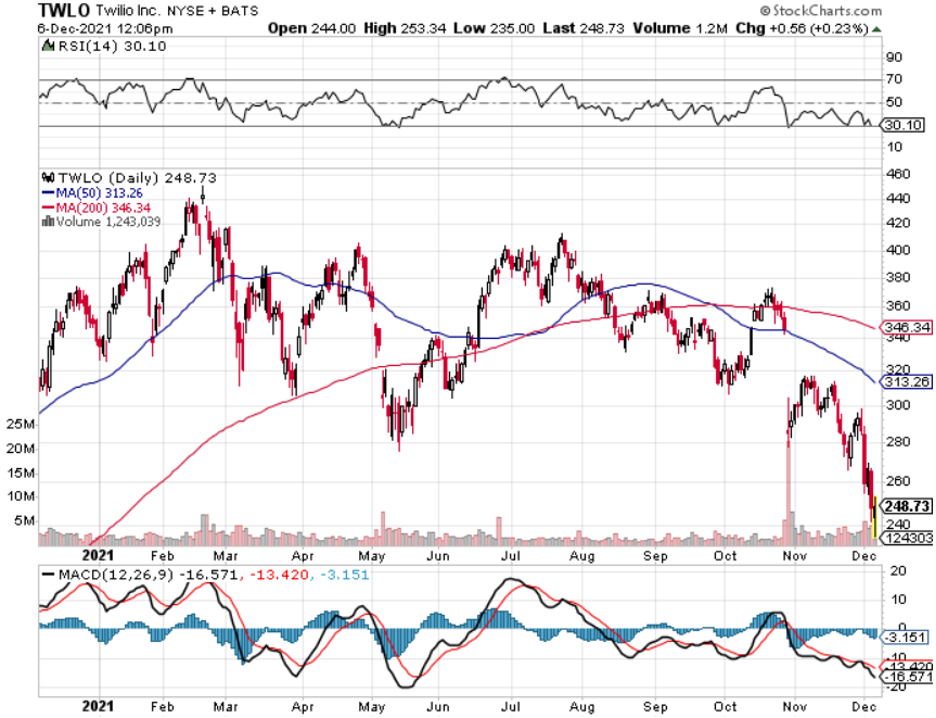
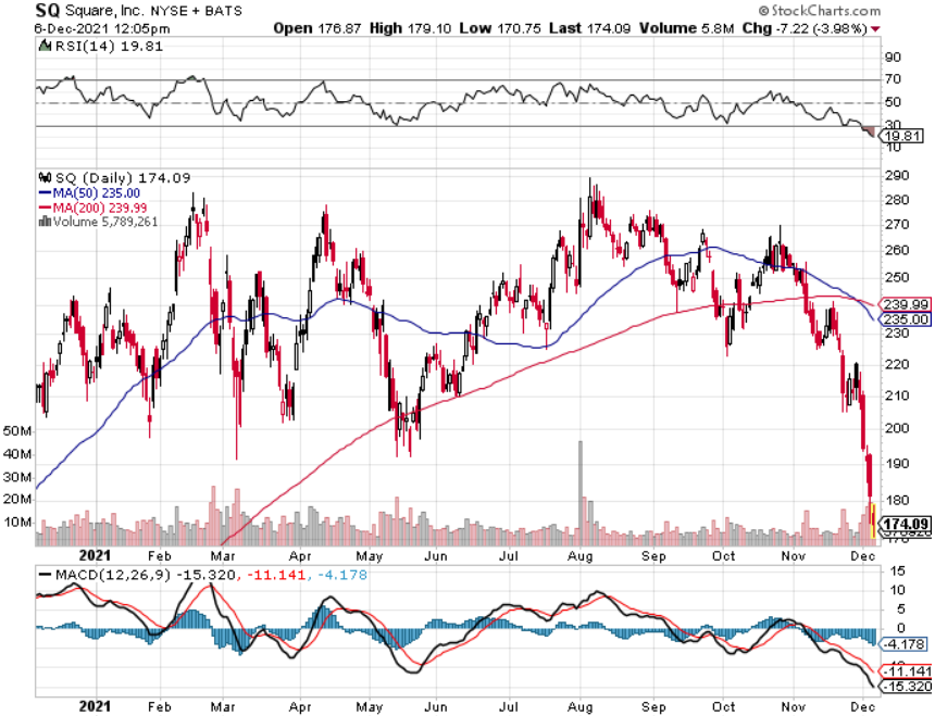
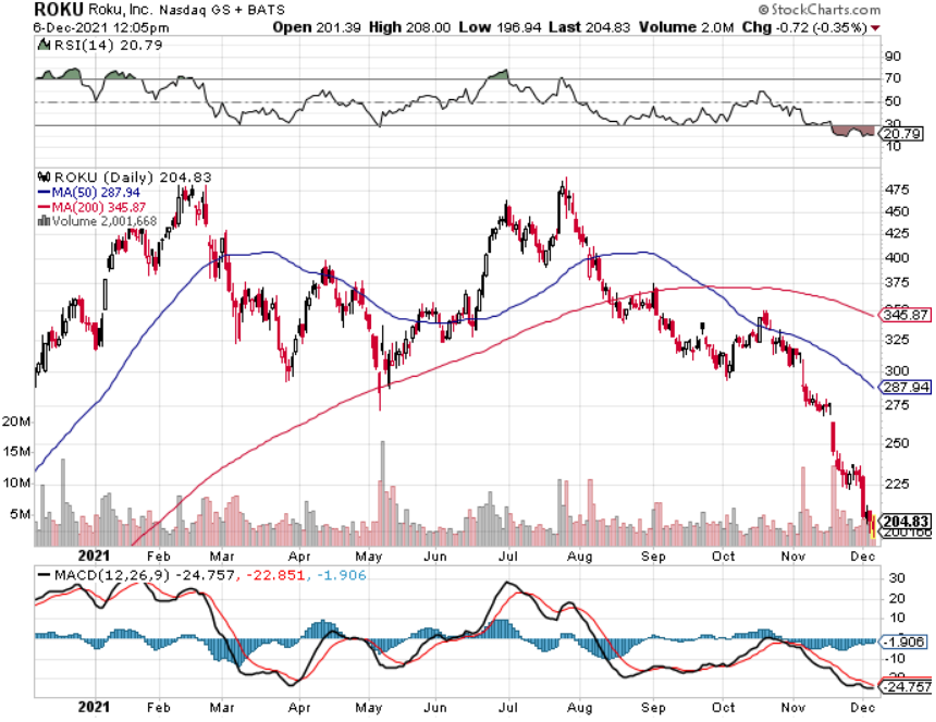
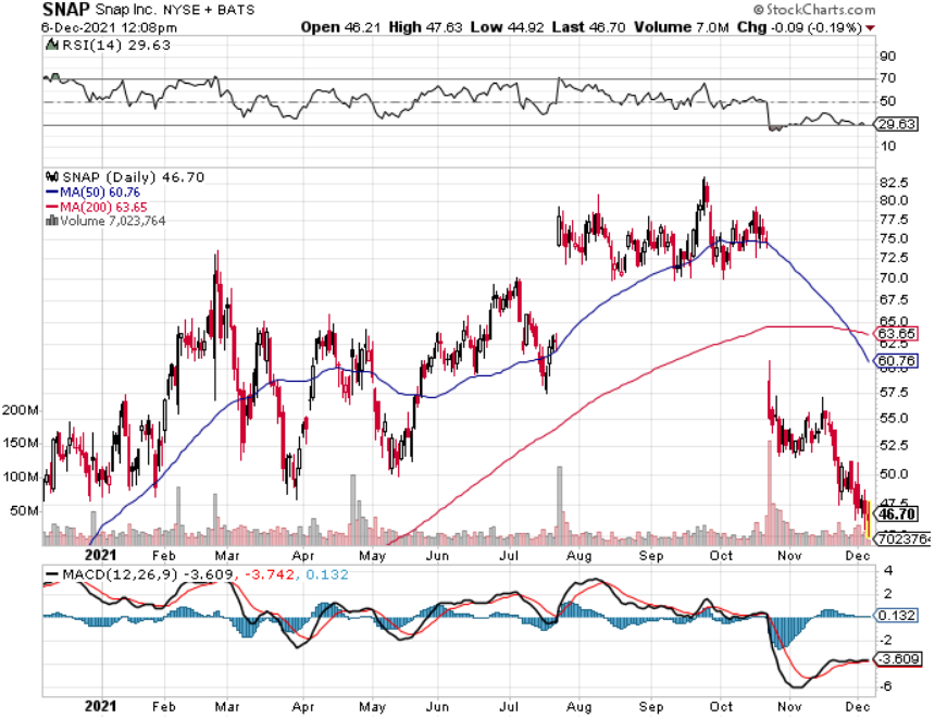
Mad Hedge Technology Letter
April 8, 2021
Fiat Lux
Featured Trade:
(SHOULD I BUY CLOUD FIRM OKTA IN APRIL?)
(OKTA), (TWLO)

The excess liquidity fueling the U.S. financial markets signal that investors are picking up the tab for heavy loss-making tech companies like never before.
Only in the U.S. can this happen at the scale it is happening as the U.S. controls its own currency, Central Bank, and possess the most reliable IPO process.
This phenomenon effectively supports a mindset of tech start-ups putting off profits for years and sometimes even decades.
Too much money chasing too few ideas and we have seen numerous examples of this with investors turning to ultra-leverage to figure out how to deliver real gains to investors.
Another heavy loss-making cloud company that I recommended buying “at the bottom” last March was identity-verification software maker Okta (OKTA) whose business was dramatically uplifted from the shift to remote work during the pandemic.
The recommendation worked like a charm with the stock essentially doubling from the time of that call.
But what’s in store for this password company moving forward?
First, let's rewind to the beginning of March when investors dumped the stock after a disappointing 2022 forecast and suffered from rumblings of the company paying too much to acquire Auth0 for about $6.5 billion.
The 30% sell-off was another example of growth companies’ ugly habit of volatility making it hard to time the entry points for heavy pocketed investors.
In the most recent analysts’ day, Okta projected sales will grow 30% in each of the next three years.
Revenue at the end of fiscal 2024 will be close to an annualized $2 billion, or about $500 million for the fourth quarter that year.
Yes, this is still a small company by any metric.
Demand for the software maker’s products, which help workers access corporate systems and consumers authenticate their identity online, has increased as more employees logged on from home in 2020.
For the 12 months through March 1, Okta was used more than 52 billion times to log into an app or website, almost 200% growth from the same period a year earlier.
Okta has retraced some of its losses when it announced it introduce 2 new products.
One, Identity Governance Administration, generates reports which show in an organization who has permission to see which parts of its systems.
The idea is to make sure people who’ve left the company or have changed roles don’t retain access to unauthorized areas.
Next, Privileged Access Management, governs who can view and change an organization’s critical systems.
The new areas expand the size of Okta’s total addressable markets to about $80 billion.
Management said these protections have become more critical as employees continue to work for home.
Many data breaches come down to server accounts that weren’t locked down when they should have been.
Admins change jobs at a rapid pace as companies look to poach talent more than ever now.
If it wasn’t the cause of the breach, it was a vector that the attackers used once they got in.
Being the cloud growth company it is, with only a market capitalization of $30 billion, the new announcements was the catalyst for Okta shares to surge 8% during intraday trading.
This is typical growth company price action.
The company is also dogged by persistent rumors it might sell to a larger tech company and I would say it’s a little surprising that the company is “buying growth” at such an early stage of its growth cycle.
But again, the subsidies keep flowing to these upstart tech guys because liquidity levels and bold risk appetites allow these types of aggressive financing that affect management decisions.
Overpaying to grow is where we are now in the tech cycle with the Central Bank effectively not allowing this bull market to die.
Okta CEO Todd McKinnon said he wants it to be one of five or six independent software clouds that every company needs.
And I also want to be one of five or six men in the world that every girl in the world wants to date.
I get it that McKinnon wants identity and access to remain Okta’s specialty rather than being subsumed into one of the other categories. Microsoft, which has identity software products that predate its cloud businesses, is already Okta’s main rival.
I would agree that Okta is prime for investors to buy the dip, but I would recommend traversing to higher waters because there are better cash burning, cloud names out there that are growing faster than Okta.
Honestly, Okta should be growing more for its small size, and “buying growth” seems like they are worried about an imminent collapse of growth which is a worrying sign.
Yes, I must agree that competition is stiff these days in the cloud ecosystem.
My conclusion with Okta is that any investor looking to buy Okta should instead buy communications-as-a-cloud firm Twilio (TWLO).
This is the communications platform operating behind the scenes of behemoths like Airbnb and Uber.
They have a 3-year revenue growth rate of 66% and grew 65% year-over-year last quarter.
That is what I call consistent!
And that is what I call cash-burning growth!
TWLO is also exactly double the size of OKTA at $62 billion and is predicting next quarter to grow 44% to 47%.
According to IDC, investments in digital transformation will nearly double by 2023 to $2.3 trillion, representing more than 50% of total IT spending worldwide, and it’s clear to me that more of this capital will flow into TWLO than OKTA.
OKTA is just a one-trick pony, but TWLO is a complex integrated system that Uber can’t live without. Many companies can live without Okta and plug in a substitute. The revenue is just way stickier with TWLO, and the strategic position is superior.
OKTA is a solid buy the dip candidate, but just buy TWLO instead.

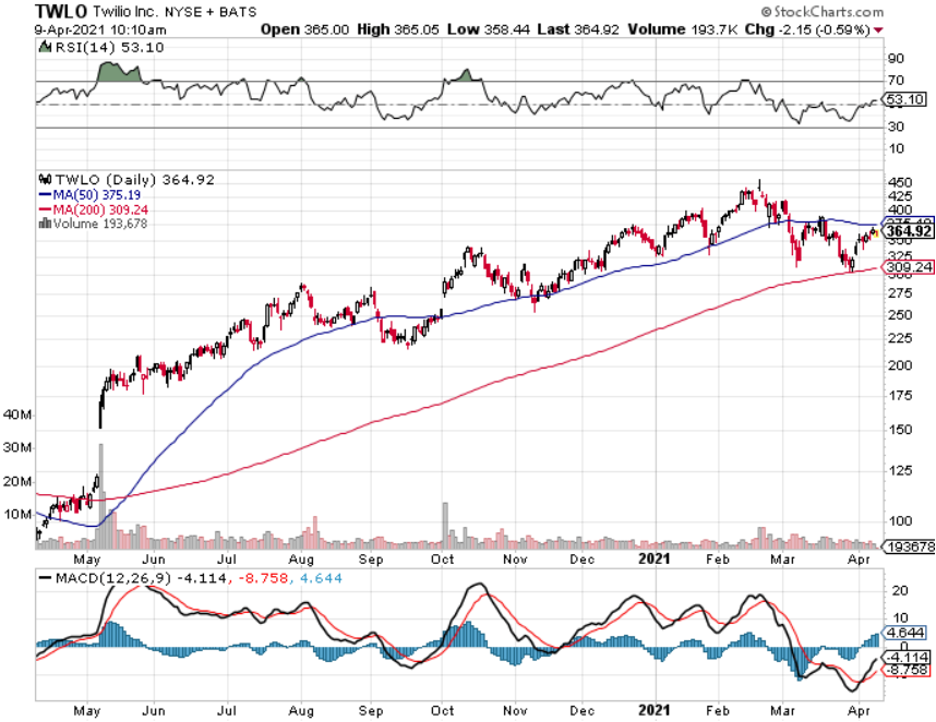
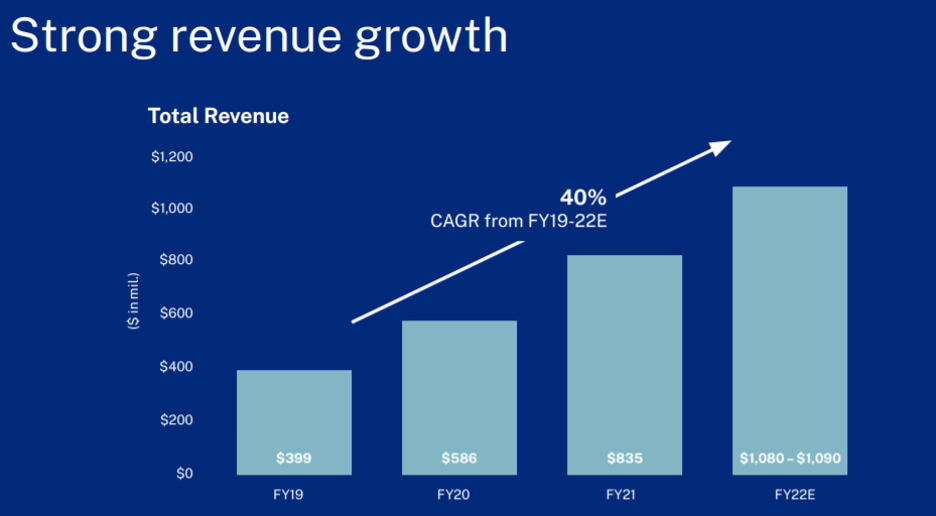
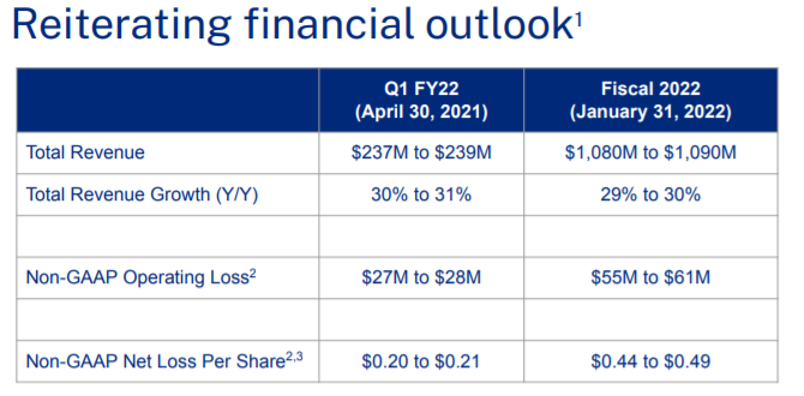
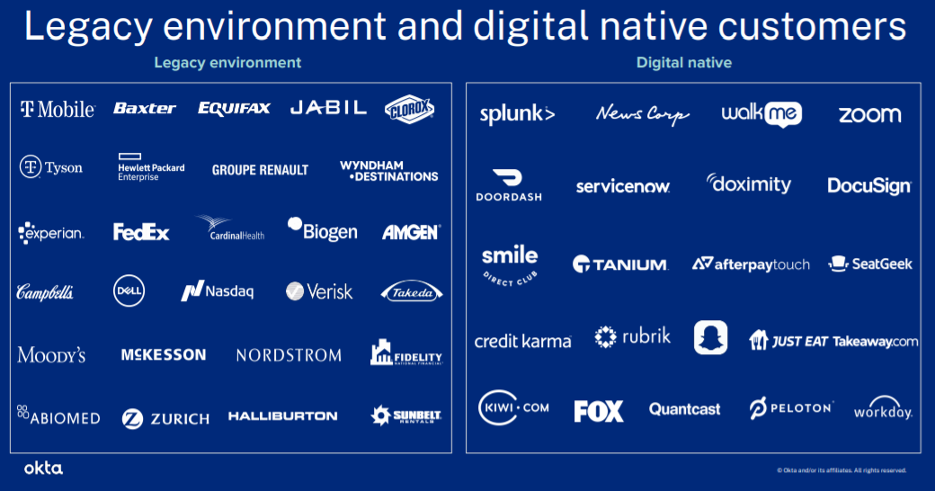
Mad Hedge Technology Letter
December 18, 2020
Fiat Lux
Featured Trade:
(TECH IN 2021)
(ZM), (WORK), (NVDA), (AMD), (QCOM), (SQ), (PYPL), (INTU), (PANW), (OKTA), (CRWD), (SHOP), (MELI), (ETSY), (NOW), (AKAM), (TWLO)

The tech sector has been through a whirlwind in 2020, and if investors didn’t lose their shirt in March and sell at the bottom, many of them should have ended the year in the green.
My prediction at the end of 2019 that cybersecurity and health cloud companies would outperform came true.
What I didn’t get right was that almost every other tech company would double as well.
Saying that video conferencing Zoom (ZM) is the Tech Company of 2020 is not a revelation at this point, but it shows how quickly a hot software tool can come to the forefront of the tech ecosystem.
M&A was as hot as can be as many cash-heavy cloud firms try to keep pace with the Apples and Googles of the tech world like Salesforce’s purchase of workforce collaboration app Slack (WORK).
Not only has the cloud felt the huge tailwinds from the pandemic, but hardware companies like HP and Dell have been helped by the massive demand for devices since the whole world moved online in March.
What can we expect in 2021?
Although I don’t foresee many tech firms making 100% returns like in 2020, they are still the star QB on the team and are carrying the rest of the market on their back.
That won’t change and in fact, tech will need smaller companies to do more heavy lifting come 2021.
The only other sector to get through completely unscathed from the pandemic is housing, and unsurprisingly, it goes hand in hand with converted remote offices that wield the software that I talk about.
The world has essentially become silos of remote offices and we plug into the central system to do business with each other with this thing called the internet.
In 2021, this concept accelerates, and cloud companies could easily check in with 20%-30% return by 2022. The true “growth” cloud firms will see 40% returns if external factors stay favorable.
This year was the beginning of the end for many non-tech businesses and just because vaccines are rolling out across the U.S. doesn’t mean that everyone will ditch the masks and congregate in tight, indoor places.
There is nothing stopping tech from snatching more turf from the other sectors and the coast couldn’t be clearer minus the few dealing with anti-trust issues.
I can tell you with conviction that Facebook, Google, Apple, and Amazon have run out of time and meaningful regulation will rear its ugly head in 2021.
We are already seeing the EU try to ratchet up the tax coffers and lawsuits up the wazoo on Facebook are starting to mount.
Eventually, they will all be broken up which will spawn even more shareholder value.
Even Fed Chair Jerome Powell told us that he thinks stocks aren’t expensive based on how low rates have become.
That is the green light to throw new money at growth stocks unless the Fed signal otherwise.
As we head into the 5G world, I would not bet against the semiconductor trade and the likes of Nvidia (NVDA), AMD (AMD), Qualcomm (QCOM) should overperform in 2021.
Communication is the glue of society and communications-as-a-platform app Twilio (TWLO) will improve on its 2020 form along with cloud apps that make the internet more efficient and robust like Akamai (AKAM).
Workflow cloud app ServiceNow (NOW) is another one that will continue its success.
The uninterrupted shift to the cloud will not stop in 2021 and will be a strong growth driver for numerous tech companies next year.
I will not say this is a digital revolution, but as corporate executives realize they haven’t spent enough on the cloud in the lead-up to the pandemic and must now play catch-up in order to satisfy new demands in the business.
The most recent CIO survey was the thesis that cloud and digital adoption at 10% of enterprise and 15% of consumer spend entering 2020 would continue to accelerate post-pandemic and into 2021-2022.
A key dynamic playing out in the tech world over the next 12 to 18 months is the secular growth areas around cloud and cybersecurity that are seeing eye-popping demand trends.
Consumers will still be stuck at home, meaning e-commerce will still be big winners in 2021 such as Shopify (SHOP), Etsy (ETSY), and MercadoLibre (MELI).
The reliance on e-commerce will open the door for more tech companies to participate in the digital flow of transactions and the U.S. will finally catch up to the Chinese idea of paying through contactless instruments and not cards.
This highly benefits U.S. fintech companies like Square (SQ) and PayPal (PYPL). Intuit (INTU) and its accounting software is another niche player that will dominate.
Intuit most recently bought Credit Karma for $8.1 billion signaling deeper penetration into fintech.
Since we are all splurging online, we need cybersecurity to protect us and the likes of Palo Alto Networks (PANW), Okta (OKTA), and CrowdStrike Holdings, Inc. (CRWD).
The side effect of the accelerating shift to digital and cloud are troves of data that need to be stored, thus anything related to big data will also outperform.
Most of the information created (97%) has historically been stored, processed, or archived.
As new mountains of digital gold are created, we expect AI will have an increasingly critical role.
I believe that 2021 will finally see the integration of 5G technology ushering in another wave of digital migration and data generation that the world has never seen before and above are some of the tech companies that will make out well.
The average household is using 38x the amount of internet data they were using ten years ago and this is just the beginning.

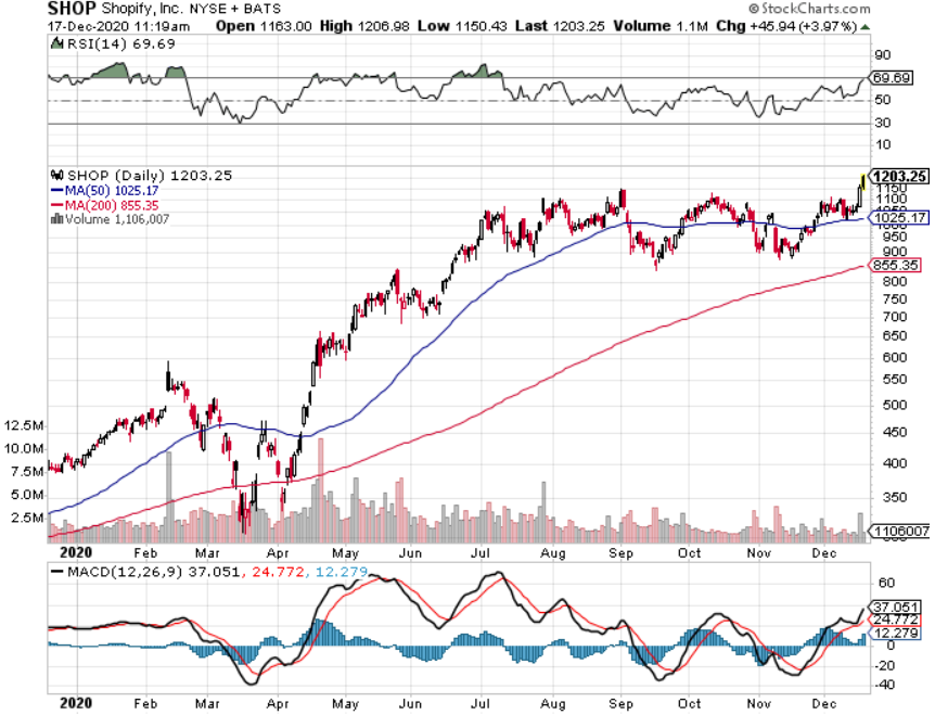

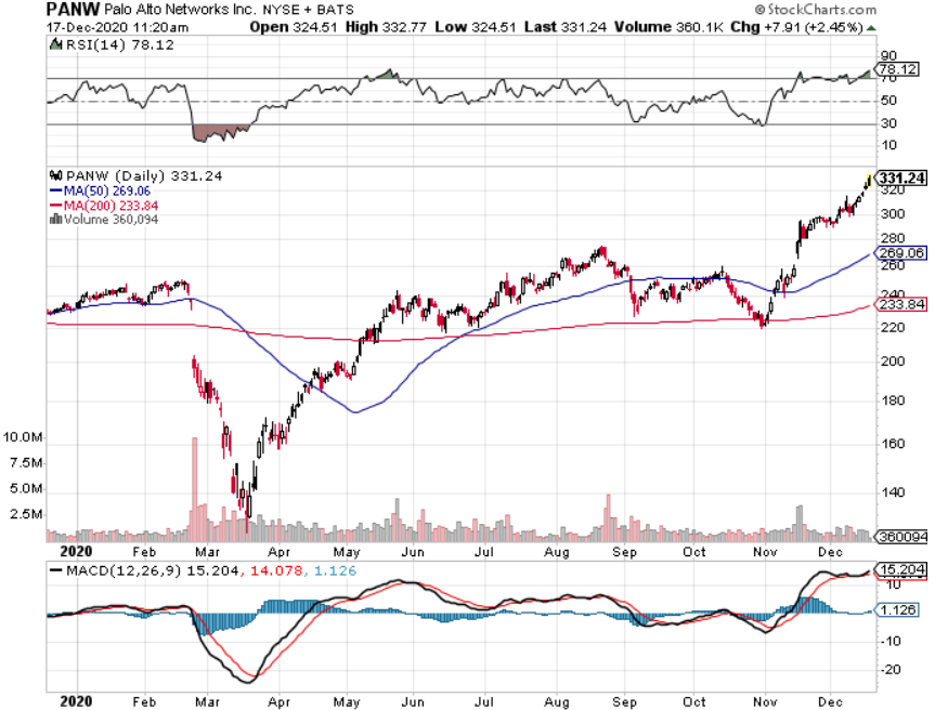
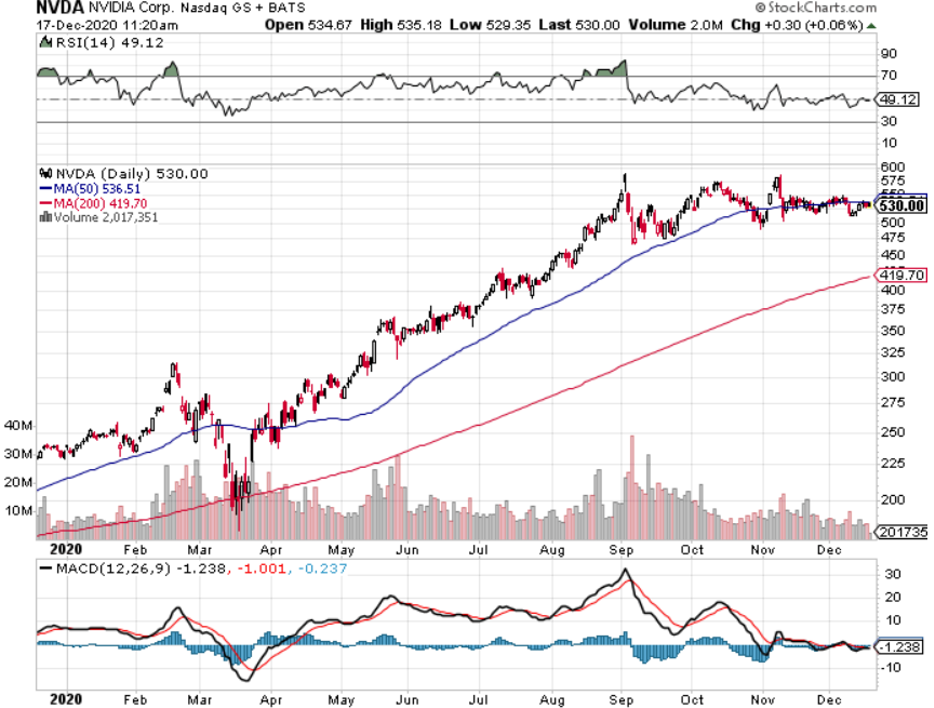
Legal Disclaimer
There is a very high degree of risk involved in trading. Past results are not indicative of future returns. MadHedgeFundTrader.com and all individuals affiliated with this site assume no responsibilities for your trading and investment results. The indicators, strategies, columns, articles and all other features are for educational purposes only and should not be construed as investment advice. Information for futures trading observations are obtained from sources believed to be reliable, but we do not warrant its completeness or accuracy, or warrant any results from the use of the information. Your use of the trading observations is entirely at your own risk and it is your sole responsibility to evaluate the accuracy, completeness and usefulness of the information. You must assess the risk of any trade with your broker and make your own independent decisions regarding any securities mentioned herein. Affiliates of MadHedgeFundTrader.com may have a position or effect transactions in the securities described herein (or options thereon) and/or otherwise employ trading strategies that may be consistent or inconsistent with the provided strategies.
This site uses cookies. By continuing to browse the site, you are agreeing to our use of cookies.
OKLearn moreWe may request cookies to be set on your device. We use cookies to let us know when you visit our websites, how you interact with us, to enrich your user experience, and to customize your relationship with our website.
Click on the different category headings to find out more. You can also change some of your preferences. Note that blocking some types of cookies may impact your experience on our websites and the services we are able to offer.
These cookies are strictly necessary to provide you with services available through our website and to use some of its features.
Because these cookies are strictly necessary to deliver the website, refuseing them will have impact how our site functions. You always can block or delete cookies by changing your browser settings and force blocking all cookies on this website. But this will always prompt you to accept/refuse cookies when revisiting our site.
We fully respect if you want to refuse cookies but to avoid asking you again and again kindly allow us to store a cookie for that. You are free to opt out any time or opt in for other cookies to get a better experience. If you refuse cookies we will remove all set cookies in our domain.
We provide you with a list of stored cookies on your computer in our domain so you can check what we stored. Due to security reasons we are not able to show or modify cookies from other domains. You can check these in your browser security settings.
These cookies collect information that is used either in aggregate form to help us understand how our website is being used or how effective our marketing campaigns are, or to help us customize our website and application for you in order to enhance your experience.
If you do not want that we track your visist to our site you can disable tracking in your browser here:
We also use different external services like Google Webfonts, Google Maps, and external Video providers. Since these providers may collect personal data like your IP address we allow you to block them here. Please be aware that this might heavily reduce the functionality and appearance of our site. Changes will take effect once you reload the page.
Google Webfont Settings:
Google Map Settings:
Vimeo and Youtube video embeds:
